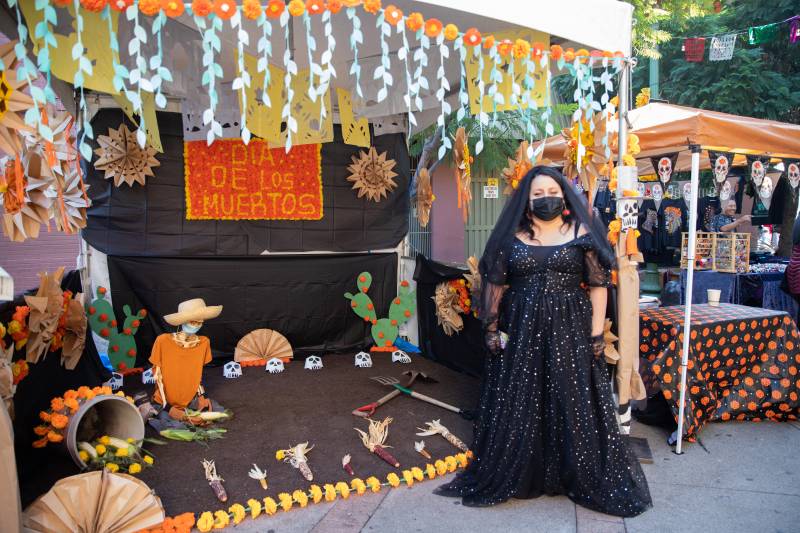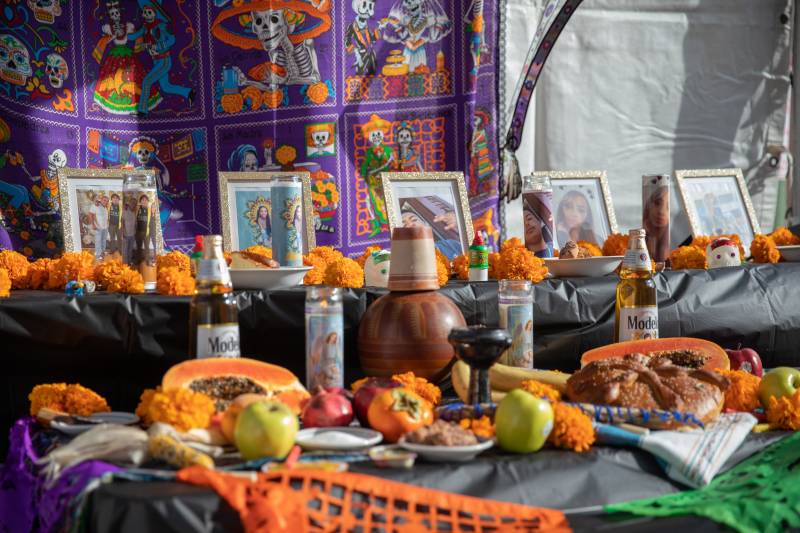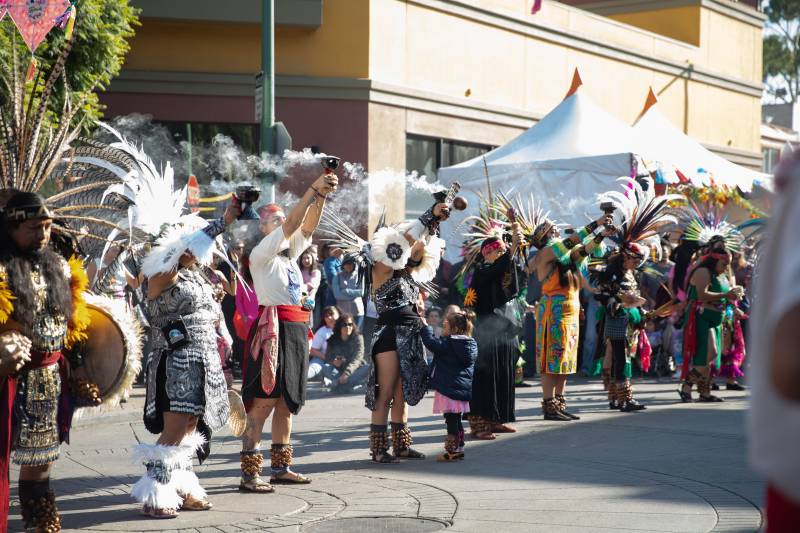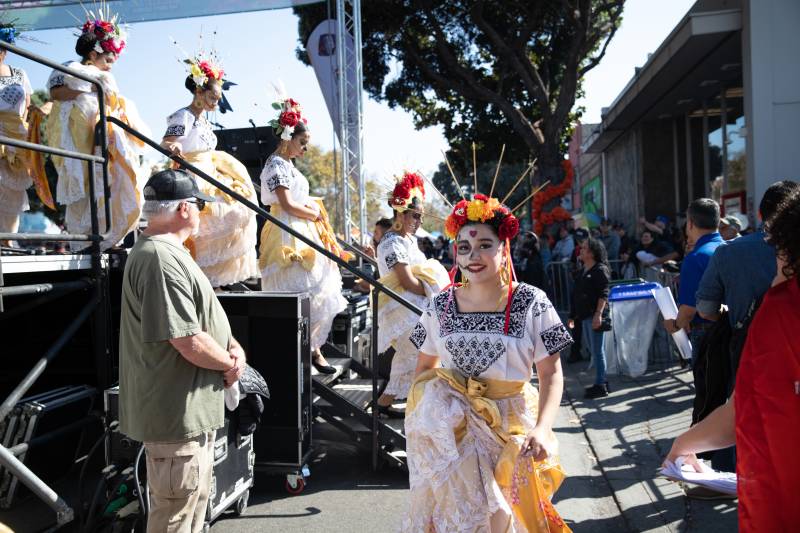Día de los Muertos celebrations, taking place through Wednesday across the Bay Area, evoke messages of healing and reflection that are particularly resonant as the pandemic stretches well into its third year.
One of the biggest events happened Sunday in Oakland’s Fruitvale neighborhood, which is majority Latino and was among the ZIP codes facing the highest case rates in California at the height of the pandemic. The theme was “Honoring Our Essential Workers” — the roles that kept the economy moving during lockdowns and were predominantly made up of people of color.
“The Fruitvale is the land of the essential workers — from our merchants, to small-business owners, our restaurant workers, campesinos, firefighters,” said Caheri Gutierrez, senior manager of communications and external affairs with The Unity Council, which organizes the festival. “Everyone in the Fruitvale is an essential worker, so we’re honoring them and uplifting them.”
One of the ofrendas, or altars, along the Fruitvale Village complex was dedicated to farmworkers: A masked skeleton wearing a bright orange shirt, jeans, a straw hat, work gloves and boots tends the soil, with a can adorned in cempasúchil, or marigolds, to hold the maize. The ground, made of real soil, also included a variety of indigenous maize ranging from purple to red.

“In our culture, corn is a very important vegetable because it’s also a symbol of growth,” said Nahui Tochtli, the artist who created this ofrenda, who is dressed as La Catrina, an elegant skeleton associated with the holiday, with a black veil. “It doesn't really die, but it just keeps on living.”


